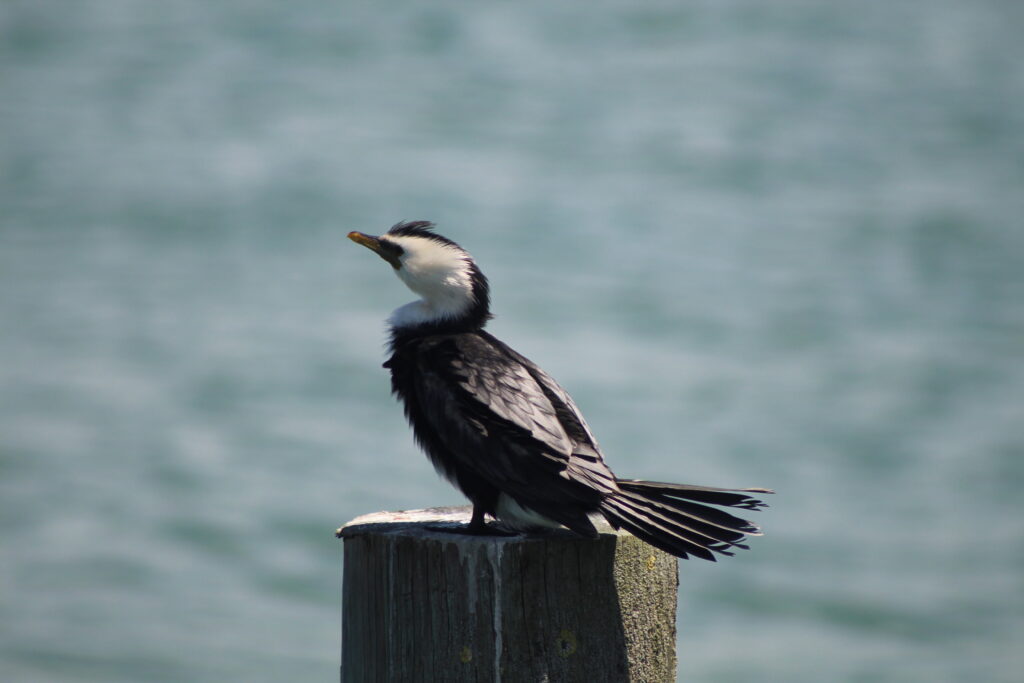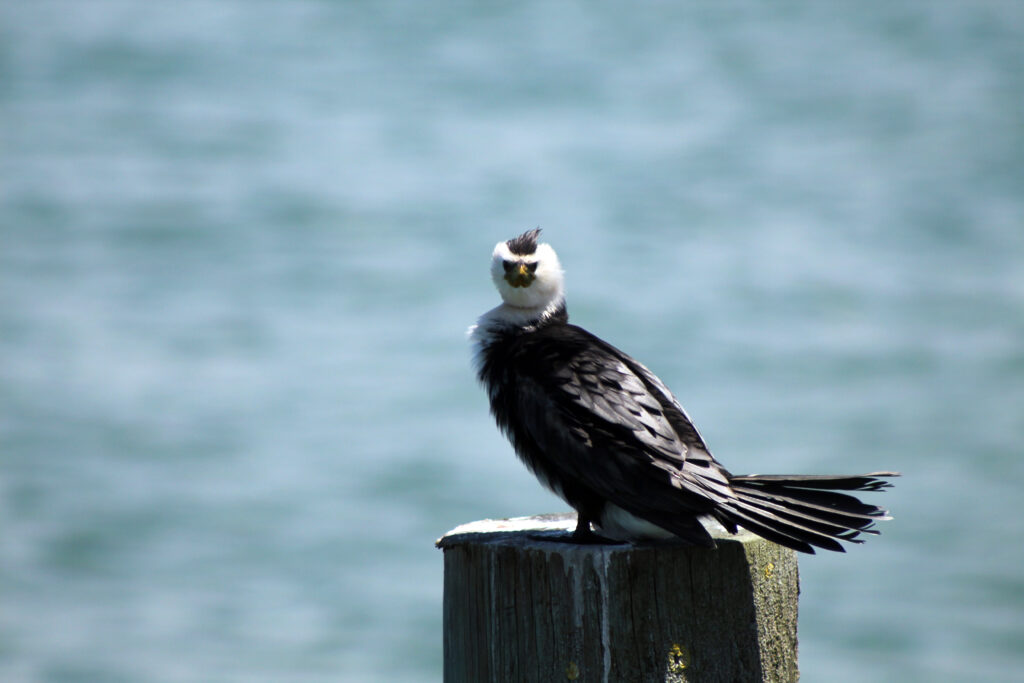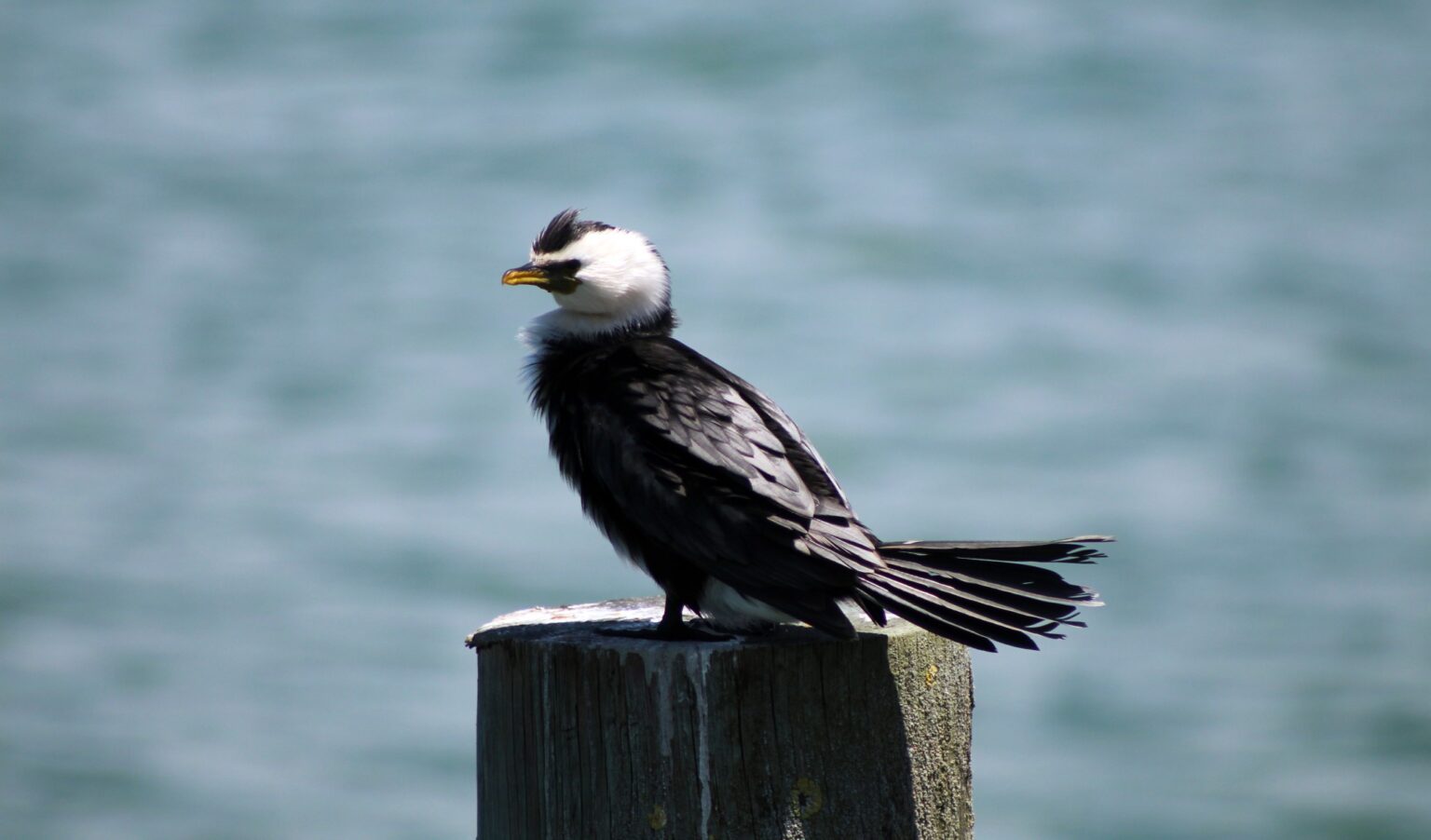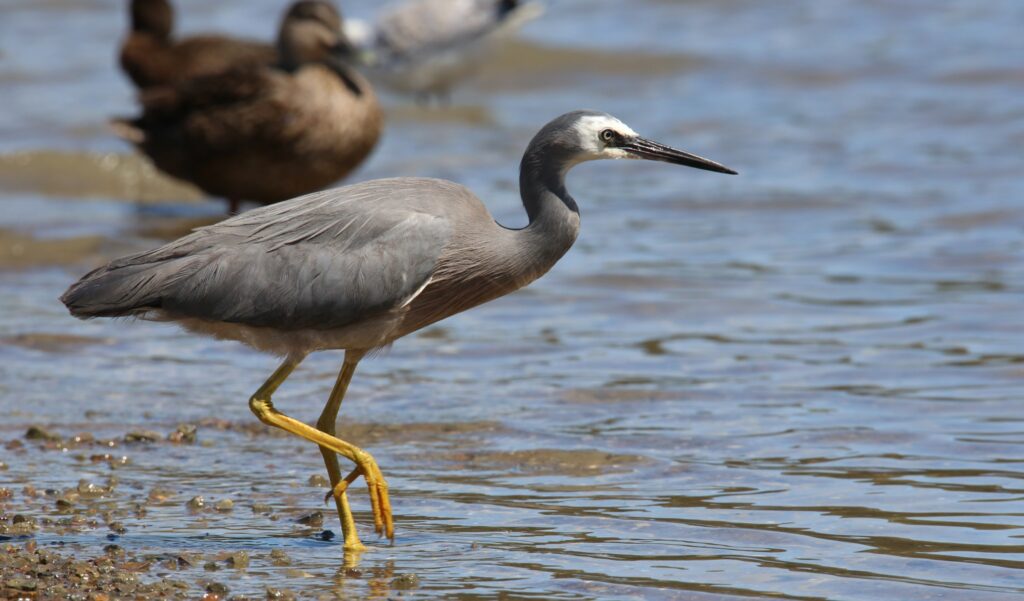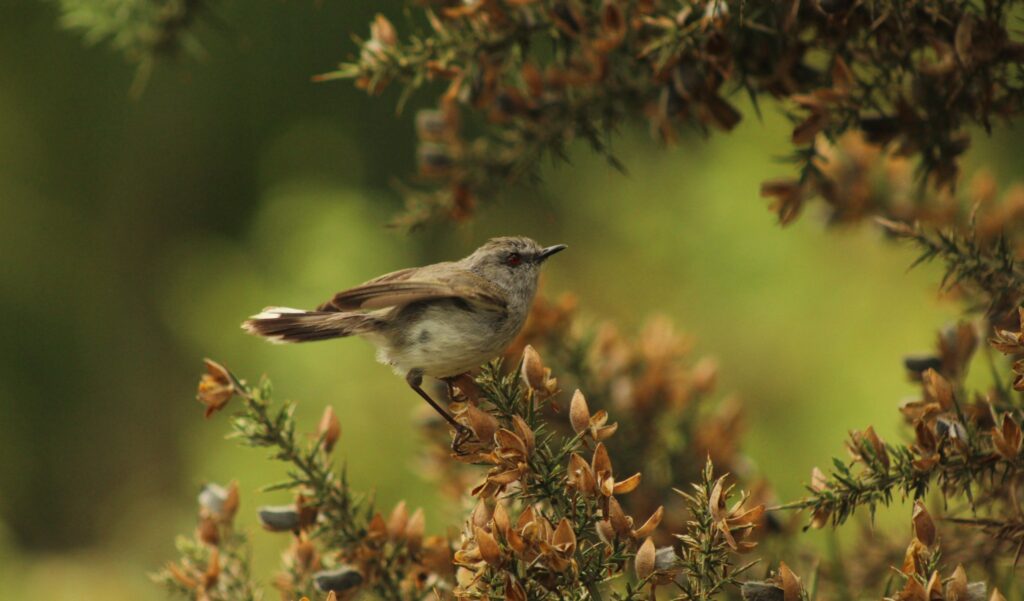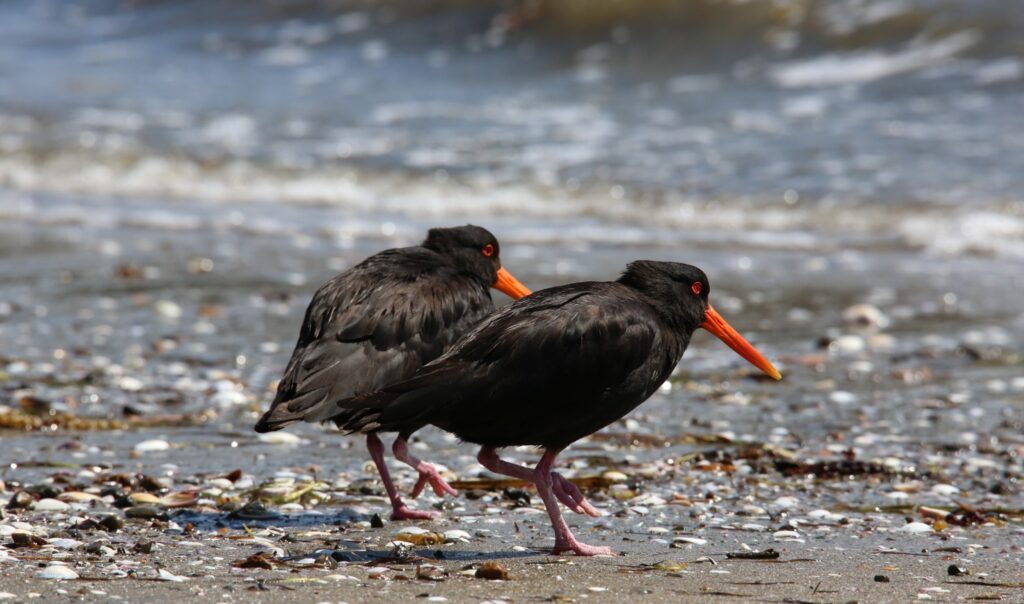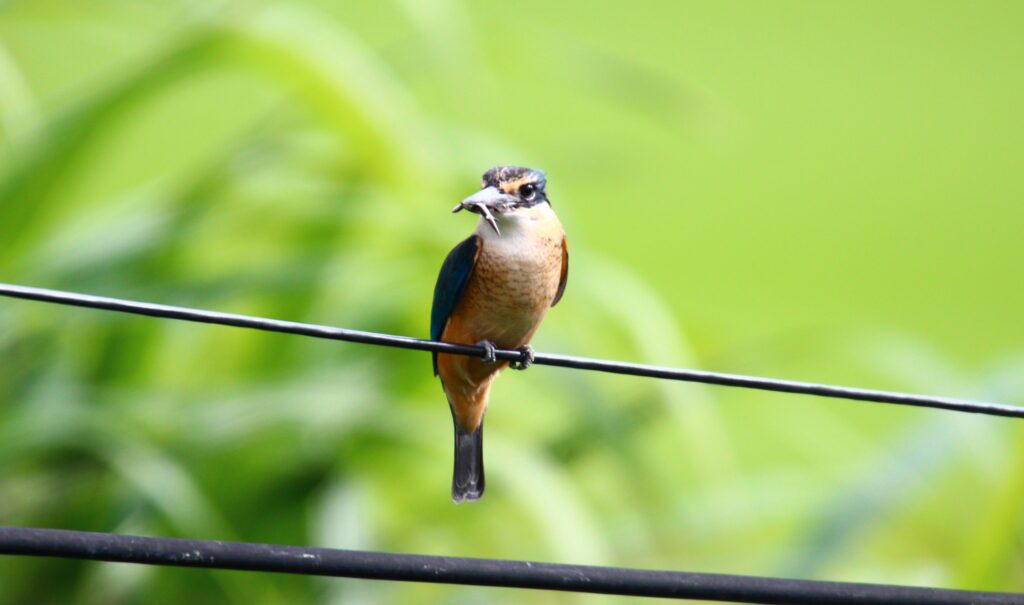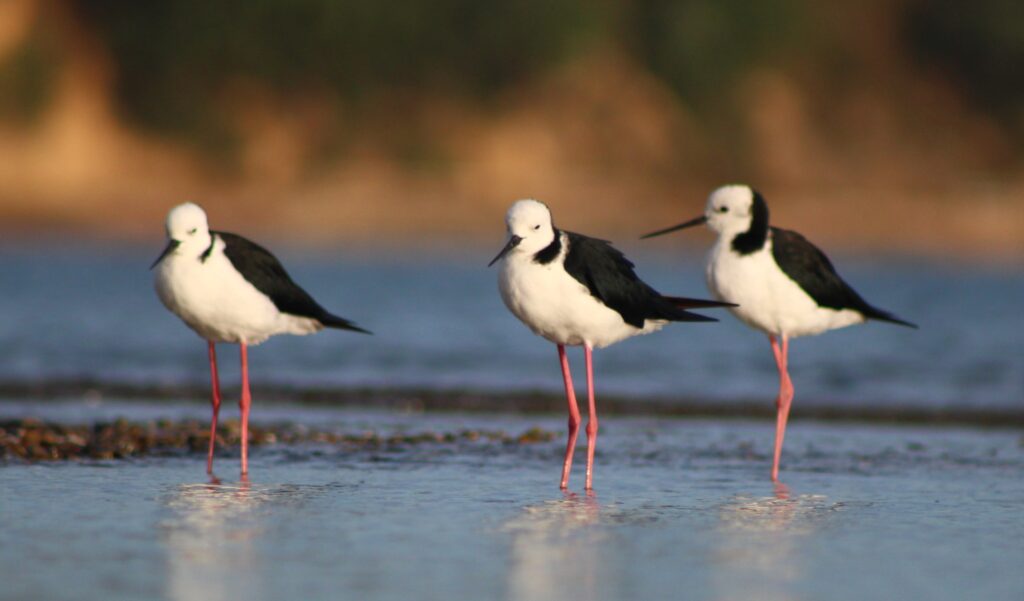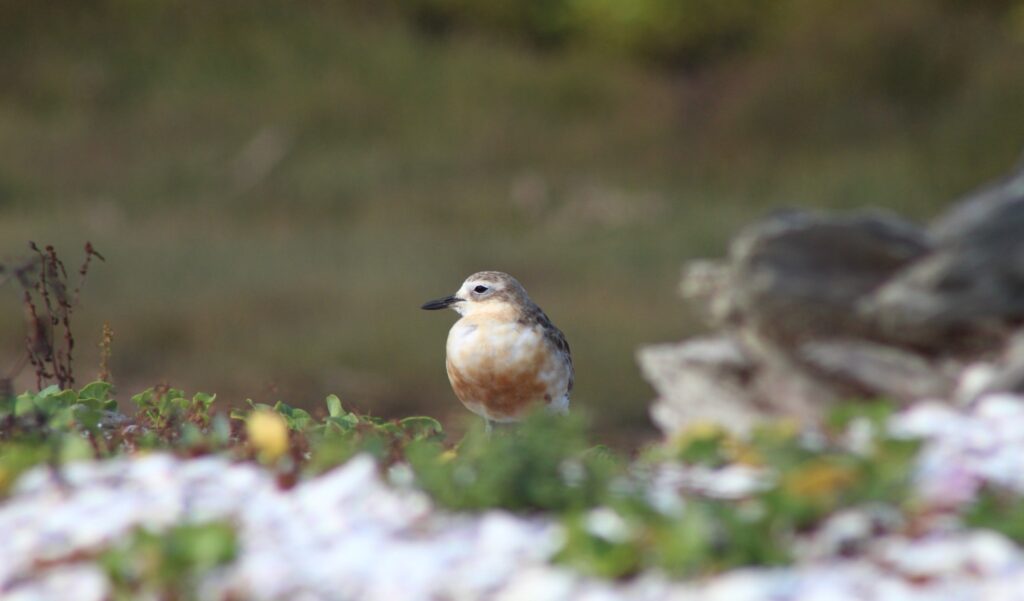Order) Suliformes
Family) Phalacrocoracidae
Species) Native Bird
Length) 56 cm
Weight) 400 – 880 g
Other Names) white-throated shag, little pied shag, little cormorant, kawau paka, little pied cormorant
Threats) Entanglement in fishing nets (particularly unattended set-nets), habitat loss due to pollution, depletion of their prey species, oil spills, and disturbance from recreational activities near their nesting sites
Identification
The little shag is a small shag, with a short yellow bill, black feet, a relatively long tail, usually spotted in the ocean searching for food or hanging around fisherman by the rocks of Waiheke.
The little shag is the most widely distributed shag species in New Zealand, found in both marine and freshwater habitats, on the coast as well as on inland lakes, ponds, rivers and streams.
It also has the most variable plumage of any New Zealand shag. The face, throat, breast and belly plumage range from completely black through to white, with a range of partial combinations in between. Most adults are black with white cheeks and throat, a colour morph sometimes referred to as a ‘white-throated shag’. 8-60% of adults (depending on location) have completely white underparts, from face to undertail. The bill is short, stout and yellow, dark on the ridge. The eye is brown, and facial skin yellow. Legs and feet are black.
The first plumage of juveniles is either white-breasted or entirely black. Examples of each type can be present in the same nest where the adults are of different plumage forms. The all-black fledglings develop a white throat after becoming independent and until then can be confused with little black shags (but note differences in bill colour and shape).
All little shags have relatively longer tails than black, pied and little black shags. When flying or roosting with wings held out, their wings are also shorter and broader than these three other ‘black-footed’ shag species.
Little shags are usually quiet except for when they are in nesting colonies, males give characteristic bi- or tri-syllabic ‘cooing’ sounds during courtship displays. A greeting call, consisting of a series of notes, uh, uh, uh, uh, fading away, is used by both sexes when approaching the nest to change over or to bring food.
black shag, pied shag, and little pied shag all have plumage that is similar to one of the patterns seen in adult or juvenile little shag colour morphs. In all ages and plumages, little shags can be distinguished from these three other species by their small size combined with a short, stout yellow bill and relatively long tail.
Breeding
Little shags nest in trees over-hanging water and also on ledges or sea cliffs, forming colonies alone or with other shag species, especially pied shags.
Elaborate bowing courtship displays are given by males at or near the nest. Breeding colonies range in size from 5 to over 200 pairs.
In mixed colonies, pied shags make large stick nests occupying open sites, whereas the nests of little shags tend to be built of thinner twigs and to be hidden in the foliage.
Nests may be no more than one metre apart and are sometimes reused. Some little shags begin nesting in July or August, while others join the colony later and breeding can extend to April or May. Peak activity occurs in October-December.
Eggs are pale blue often with patchy white chalky coating, Up to 5 eggs may be laid from which 1-3 chicks are raised.
Little shag nestlings begin life with bare black skin, black bill, and pink scalp and throat. A black downy stage follows, during which the scalp is bald and the salmon pink throat pouch is conspicuous. Feathers grow through the down and the young remain in or near the nest until ready to fly.
Food
Small fish, eels and crustaceans; also frogs, tadpoles and insects. Little shags generally forage alone, making a succession of shallow dives around 20 seconds long. Chicks are fed by regurgitation.
Waiheke Locations
Putiki Bay – I have seen them perched on Buoys, drift wood or rocks during low tide.
Around Fisherman – Usually seen bobbing up and down in the ocean searching for food and hanging around fisherman by the rocks and boats.
Little shags are flying birds so they can really be anywhere on Waiheke but not just Waiheke they are all over New Zealand, these are just areas I’ve spotted them and photographed.
Gallery

